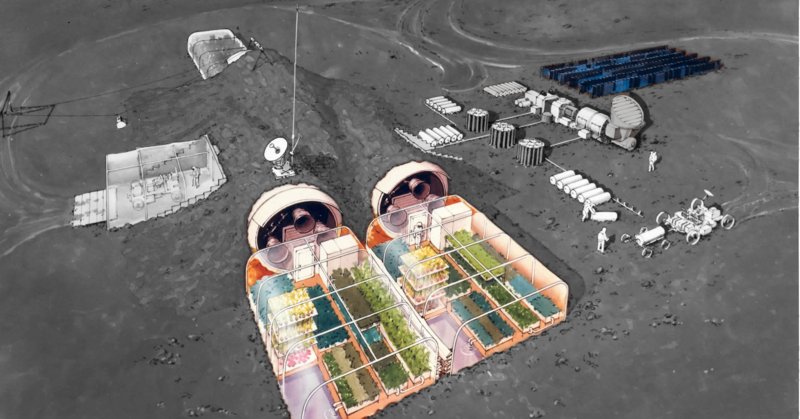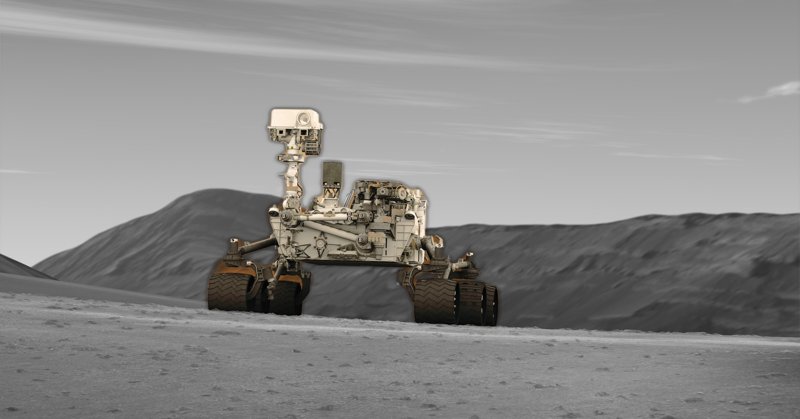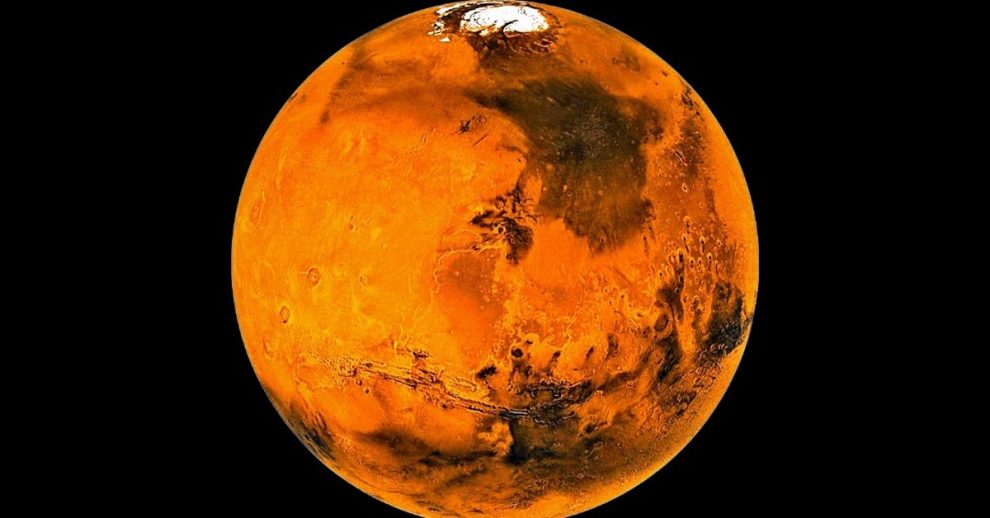For centuries, Mars has ignited imaginations—from ancient astrologers naming it after the god of war to 20th-century writers dreaming up Martian invasions. But beyond the red hue and rover selfies lies a planet of profound scientific intrigue. Mars once flowed with rivers, experienced massive volcanic eruptions, and is home to the tallest mountain in the solar system. It has two tiny moons with mysterious orbits, evidence of planet-wide dust storms, and skies that shift in color from rust-red to icy blue. From its shifting seasons to surprising magnetic remnants in its crust, Mars is more dynamic and alien than many realize. Now, as we prepare for crewed missions and even long-term settlements, understanding the planet’s strange features becomes more urgent than ever. Here are 25 of the most incredible, obscure, and often unsettling facts about Mars that show just how bizarre—and maybe even habitable—it really is.
Mars to Stay Initiative

1. The Mars to Stay initiative proposes that the first astronauts sent to Mars should go with the intent to remain there permanently. Once habitability is confirmed, astronauts would convert unused emergency return vehicles into settlements. This approach would not only reduce costs but also ensure a permanent human settlement on Mars.
2. One major concern in establishing human settlements on Mars is pregnancy. The stressful and isolated environment may lead to sexual activity among crew members. However, scientists still do not fully understand how the spacecraft’s environment would affect a child’s development.
3. The Soviet space probe Phobos-2, designed to explore Mars’ moons, failed due to a critical malfunction. Two out of its three computers ceased functioning, and since the system required a majority vote for decisions, the single healthy computer could not outvote the non-functional ones. This failure prevented the probe from completing its mission.
4. Since Mariner 4’s historic flyby in 1965, Mars has been visited by numerous orbiters, landers, and rovers. As of 2023, there are ten functioning spacecraft on and around Mars, including NASA’s Curiosity and Perseverance rovers. These missions have provided a continuous robotic presence on the Red Planet since 1997.
5. In 2017, NASA proposed deploying a “magnetic shield” at Mars’ Lagrange point L1, located between the Sun and Mars. This shield would protect Mars’ atmosphere from being stripped away by solar wind, potentially aiding in atmospheric restoration.
6. In 1999, NASA lost a $125 million Mars orbiter due to a calculation error. The mistake arose because Lockheed Martin engineers used Imperial units (inches and feet) instead of metric units (centimeters and meters) in their calculations. This discrepancy led to the spacecraft’s failure to enter Mars’ orbit.
7. Olympus Mons on Mars is the tallest known mountain in the solar system. Its massive base is so large that an observer on its peak wouldn’t realize they were on a mountain, as the slope is obscured by the planet’s curvature. Standing at 16 miles high and 374 miles wide, it is also the largest volcano in the solar system, with an escarpment or cliff around its base that reaches up to 6 miles high, surpassing the height of Mount Everest.
8. While the Grand Canyon and the Yarlung Tsangpo Canyon are the largest canyons in the U.S. and on Earth, respectively, they are dwarfed by Valles Marineris on Mars. This colossal canyon measures 2,500 miles long, 120 miles wide, and over 4 miles deep, making it the largest canyon in the solar system.
9. The asteroid impact that led to the extinction of the dinosaurs was so powerful that it sent Earth rocks to Mars and Europa. Consequently, if we discover life on these celestial bodies, it may have originated from Earth. Conversely, meteorites that fell to Earth during a meteor shower in July 2011 have been confirmed to be from Mars.
10. Mars hosts polar ice caps composed of water and dry ice, with the southern cap alone containing enough water ice to create an 11-meter global ocean if melted. Recent seismic data suggest the presence of a deep subsurface aquifer, possibly containing enough water for a 520-780 meter deep ocean on Mars. Although liquid water cannot currently persist on the surface due to low pressure, ancient shorelines indicate that a planet-wide ocean, possibly the size of the Arctic Ocean, existed billions of years ago.
Toxic Martian Dust Dangers

11. Martian dust poses a significant threat to humans due to its toxic perchlorate content. These compounds can interfere with thyroid function by blocking iodine uptake, potentially leading to hypothyroidism, fatigue, weight gain, and metabolic issues. Inhaling or ingesting this dust could therefore be hazardous for future Mars explorers.
12. Mars’ smallest moon, Deimos, has an escape velocity of just 5.2 meters per second. This means that a person taking a running jump on Deimos would launch off its surface like a slow-moving rocket.
13. The density of Phobos, Mars’ largest and closest moon, suggests that 25-35% of its volume consists of empty space. Tidal forces will eventually cause Phobos to either collide with Mars or break apart into a ring in approximately 50 million years.
14. Phobos orbits just several thousand kilometers above Mars’ surface. This proximity is so close that Earth would not fit between Mars and Phobos. It completes a full circle in just 7.66 hours.
15. A dead body left on Mars would undergo a unique mummification process, preserving it better than Egyptian mummies. The initial stages of decomposition, such as algor mortis (cooling), livor mortis (blood pooling), and rigor mortis (stiffening), would occur. However, the lack of moisture and bacteria would prevent further decomposition, leading to natural preservation in Mars’ dry environment.
16. Since 1666, scientists have known the length of a day on Mars with an accuracy of three minutes. NASA engineers and scientists wear special wristwatches programmed to keep “Mars time,” which is about 24 hours, 39 minutes, and 35 seconds, to synchronize with rovers operating on Martian time.
17. Buzz Aldrin, the second man on the moon, devised an orbital technique called “Mars Cycling.” This method allows spacecraft to perpetually travel between Earth and Mars with only a single initial boost. The cycle uses gravitational assists and orbital mechanics, enabling proposed “Aldrin Cyclers” to complete a round trip approximately every 2.1 years, conserving fuel.
18. Sounds produced on Earth would sound markedly different on Mars. The Martian atmosphere, composed mostly of carbon dioxide and with lower pressure than Earth’s, distorts sounds to a lower pitch.
19. Mars has only 10% of the Earth’s mass, significantly affecting its gravitational pull and atmospheric density. The dust storm depicted in the film “The Martian” is implausible because Mars’ atmosphere is about 1% as dense as Earth’s. Even in the strongest Martian storms, winds only reach about 60 miles per hour, making it unlikely to topple or damage major mechanical equipment.
20. In 2014, a comet passed extremely close to Mars, at a distance nearly one-third that of the Earth-Moon gap. This event heated Mars’ upper atmosphere and measurably slowed the orbits of several Mars orbiters.
Curiosity’s Musical Milestone

21. In 2013, NASA’s Mars Curiosity rover celebrated its first year on Mars by humming “Happy Birthday” to itself. It achieved this by vibrating its sample-analysis unit to create the musical tune. However, Curiosity performed this unique celebration only on its first “birthday.”
22. Around 4 billion years ago, Mars likely had an oxygen-rich atmosphere, which predates Earth’s oxygenation. This oxidation on Mars occurred before Earth’s Great Oxygenation Event, which took place approximately 2.4 billion years ago. Unfortunately, Mars lost its magnetic field about 4.2 billion years ago, exposing its atmosphere to solar winds and causing oxygen and other gases to escape into space.
23. While Earth features blue skies and red sunsets, Mars offers the opposite experience. On the Red Planet, rust-colored skies give way to blue sunsets. Moreover, astronauts living on Mars would witness sunsets that last longer than those on Earth, with the Sun appearing distorted due to atmospheric lensing.
24. The International Potato Center has successfully grown potatoes in a simulated Martian environment. They cultivated the plants in a CubeSat, which mimicked the Martian air pressure and atmosphere. Additionally, they used saline desert soils analogous to Martian soils as the growing medium, demonstrating the potential for agriculture on Mars.
25. In 1981, NASA planned to send astronauts to Mars using NERVA nuclear rockets. However, Congress cut NASA’s funding, and President Nixon canceled the NERVA project entirely in 1973. As a result, NASA shifted its focus to developing the Space Shuttle program instead.











Add Comment